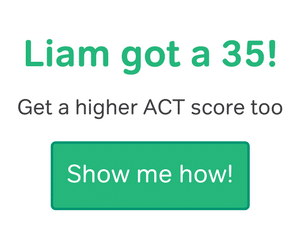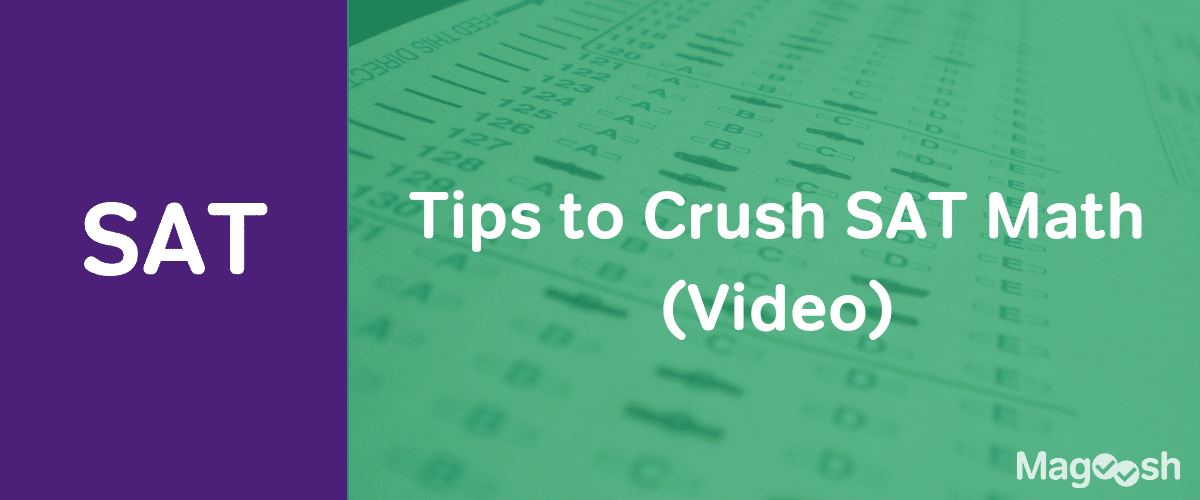Probability is actually pretty rare on the SAT. So don’t freak out about this topic. In fact, I’d only recommend this post for those looking for a near perfect—those who want to make sure they have all their bases covered.
What you’ll have to know is the following:
Probability (Likelihood of something happening) = #of desired outcomes/# of possible outcomes
Let’s say we want to know what is the probability of rolling “snake eyes”, or two ‘1’’s, on a pair of fair dice. Well, how many ways can you roll two ‘1’s? There is only one way. So for a desired outcome—the quantity in the numerator—we are going to write ‘1’.
Now how many different ways can you roll two six-sided dice? (For a review of the Fundamental Counting Principle click here). Well, there are six possibilities on each die, so that gives us 6 x 6 = 36.
Therefore, the probability of rolling “snake eyes” with two dice is 1/36.
Of course things do get a little more complicated with probability—that’s why so many people dread it. Below are some medium- to medium-difficult questions for you to sink your teeth into. If you nail all three, the probability of you struggling with a probability question on the test is very low.
If not, make sure you understand the concepts (see explanations below), and you should do just fine on the probability questions the SAT throws at you.
1. A basket contains a total of 24 balls of yarn. 1/3 are white, ¼ are red, 1/6 are blue, and the rest are black. What is the probability, if you reach into the basket, of pulling out either a red or black yarn?
- ¼
- 1/3
- ½
- 7/12
- 5/6
2. A six-sided die is thrown three times. What is the probability that on all three rolls a prime number will never come up?
- ½
- 1/6
- 1/8
- 1/64
- 3/216
3. A coin is tossed three times. What is the probability that three “tails” in a row will not show up?
- 1/8
- 3/16
- ½
- 5/8
- 7/8
Explanations:
1. Hey, a little fun with fractions never hurt! So, if we do the math, we get 8 white, 6 red, and 4 blue. That means the remaining 6 are black. Since the question asks for red AND black, that gives us 12 (desired outcomes) out of 24 (total outcomes), or ½.
2. First off, there are three prime numbers on a six-sided die: 2, 3, and 5. What is the probability of NOT rolling one of these three numbers? 1/2, since rolling a 1, 4, or 6 would count. Now, the probability of rolling an outcome of ½ (or 50%) is much like tossing a coin. In this case, we are tossing the coin, or rolling a die with a ‘1’, ‘4’ or ‘6’, three times: ½ x ½ x ½ = 1/8. Answer: (C).
3. Speaking of coins! A quick way of doing this problem is subtracting the probability of getting all tails by the total probability. Before we do that a quick thing on the probability space. Usually, we talk about something definitely happening as having a probability of 100%. However, 1 also represents a 100%. How? Well, if the probability of something happening is ½ or 50%, what happens when you multiply both those numbers by 2? You get ‘1’ and 100%. So probability can be defined along a scale from ‘0’ to ‘1’.
So for the coin toss, ‘1’ represents all possible outcomes. Subtracting the probability of all tails from ‘1’ will give us the probability of NOT getting on tails: 1 – (1/2)^3 = 1 – 1/8 = 7/8. (E).






Leave a Reply